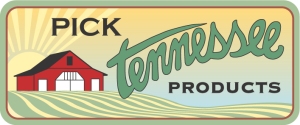Along the same lines as last week’s post about CSAs, I wanted to bring farmers markets into view with our efforts to increase agriculture awareness and accessibility.
Farmers markets have experienced a new wave of interest as many consumers are looking for ways to eat fresh, local produce.
Like Community Supported Agriculture programs, farmers markets provide a great avenue for consumers to develop a relationship with the farmers who grow their food; it also serves as a way to connect urban areas to rural. Although city-life can be very appealing, it often provides very little green space for homeowners to use for growing flowers and produce. Farmers markets are a great solution for those who desire fresh goods without the responsibility or space required to grow them.
Farmers markets can vary widely from small-town produce stands to popular hang-outs such as the Nashville Farmers’ Market. Regardless of size, farmers markets are meeting two important demands from consumers—fresh and local produce.
A great source for finding farmers markets all across the state of Tennessee is through the Pick Tennessee Products program.  This program is part of the Tennessee Department of Agriculture and is “dedicated to connecting people everywhere to Tennessee farms, farmers, farmers markets and all the great things that come from our farms and food businesses.”
This program is part of the Tennessee Department of Agriculture and is “dedicated to connecting people everywhere to Tennessee farms, farmers, farmers markets and all the great things that come from our farms and food businesses.”
Growing up, I can remember visiting farmers markets and being so intrigued by all that surrounded me. Not only are they a great place to find high-quality goods, they can also provide memorable experiences.
If you haven’t been to a famers market before, I encourage you to check one out! If you have been to one, how would you describe your first visit?

